
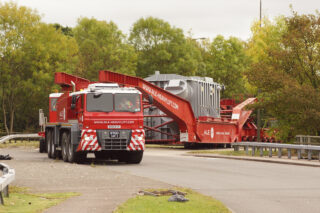
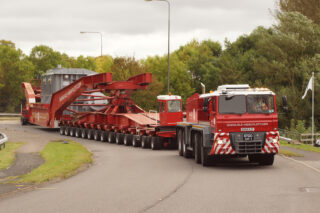
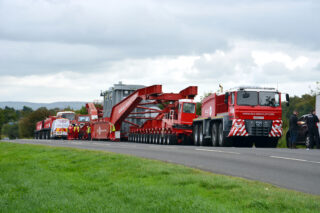
HEAVYTORQUE LEARNS ABOUT ALE’S LATEST DEVELOPMENT - THE TROJAN - BUT ALSO DETAILS ITS LINKS WITH THE UK’S HEAVY HAULAGE INDUSTRY OF YESTERYEAR
When it comes to the history of ultra-heavy haulage in the UK, the number six has often had some significance. In the immediate post-war period, Wynns infamously rebuilt six ex-military Pacific M26 ‘Dragon Wagons’ as heavy prime movers. These were to have a major impact, both visual and functional, on the heavy haulage that was required to rebuild the country after the conflict. Then, in the late 1970s, Scammell produced six Mark 2 Contractors, with pivotal design input from Stan Anderson, Wynns’ chief fleet engineer at the time. Again these gave – and, in some cases, still provide – sterling service, with many anecdotal accounts of moving gross weights that far exceed the design ratings.
Fast-forward to the present day, and we are witnessing an example of a premier transport engineering company building, in house, six specialist prime movers (Trojan) to meet the specific needs which are unique to this industry.
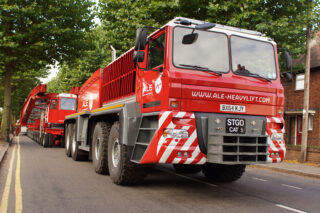
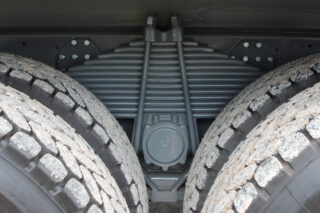
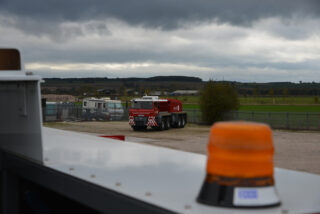
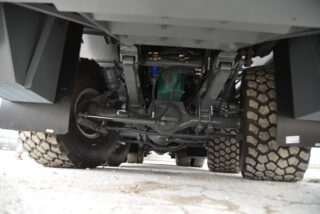
SPECIFYING AND BUYING TRUCKS AND TRAILERS HAS NEVER BEEN EASY, BUT THE ADVENT OF NEW TYPE APPROVAL LEGISLATION BRINGS WITH IT EXTRA PITFALLS FOR THE STGO OPERATOR. HEAVYTORQUE LOOKS AT THE AIMS OF THE NEW RULES
As with much legislation that affects road transport, the ECWVTA (European Community Whole Vehicle Type Approval) legislation seeks to run a hot iron over Europe, and get rid of any creases in the way vehicles are designed and built. For truck manufacturers, there are certainly associated costs, but for trailer makers it is even more expensive. As of the end of October 2014, the rules now consider a vehicle chassis and its body as a single unit to be type approved, not two products as previously.
Rigid truck bodybuilders are faced with the choice of ECWVTA or, if they are a low volume producer and intend to only sell in the UK, they can opt for NSSTA (National Small Series Type Approval) and thus escape some of the technical burdens, less admin and a more common sense approach to Conformity of Production (CoP). An approved design means that individual vehicles escape further testing. A third way exists, for manufacturers or importers of single or very low volume vehicles, the IVA (Individual Vehicle Approval).
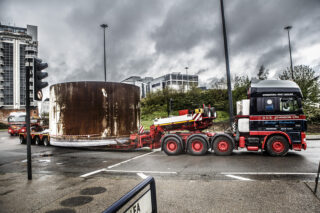

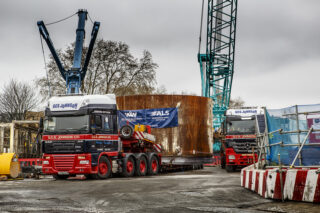
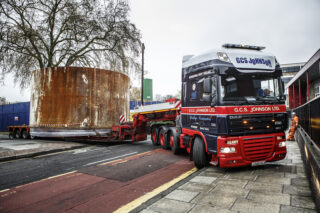
Issue One: with 120 pages of first-class journalism and photography, what more can you wish for? HeavyTorque, Britain’s best loved specialist transport title! Click the appropriate link below to purchase your annual subscription, or individual copy.
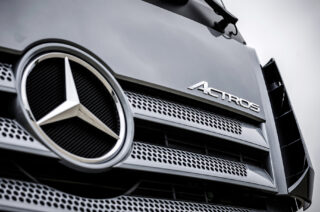
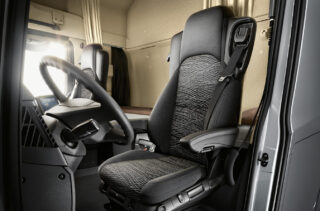
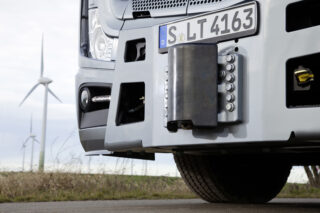
HEAVY HAULAGE SPECIALISTS HAVEN’T WARMED TO AUTOMATED MANUAL TRANSMISSIONS (AMTS) AS MUCH AS REGULAR 44-TONNE OPERATORS, GENERALLY PREFERRING MANUAL BOXES. HEAVY TORQUE HAS BEEN TO GERMANY AND DRIVEN SOMETHING THAT MAY CHANGE THEIR MINDS. HEAVYTORQUE REPORTS FROM MUNSINGEN
Truck manufacturers are caught between a rock and a hard place when it comes to developing specialist chassis for niche markets. The numbers often just don’t stack up with the investment taking years to recoup. Truck factories that produce on a grand scale, and with in excess of 100,000 trucks a year coming off the line at Mercedes-Benz Wörth plant near Karslruhe, it is the biggest in Europe, often operate on economies of scale that do not favour specialist buyers.
Titan, an independent specialist in heavy industrial and mining vehicles, was appointed to build heavy haulage tractors under licence for Mercedes, and it has done so since 1996. But the arrival of Euro 6 marks the point where the SLT (Schwer Last Transport) comes home to a Mercedes factory. “Titan has done a great job for us since 1995, and it developed the heavy haulage version of our tractor product extremely well,” says Ulrich Bastert, head of truck sales for Europe and Latin America at Mercedes. “We’ve always said that as our custom tailored trucks operation in Molsheim developed, the SLT will come back to us.”
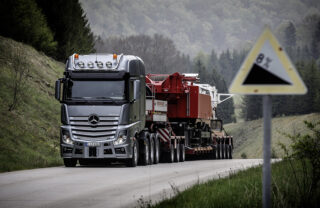
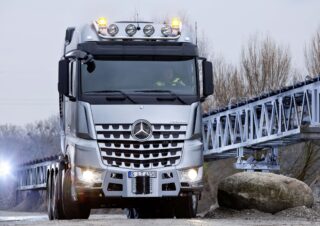
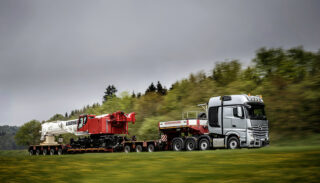
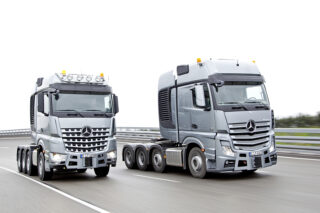
THE MUCH-VAUNTED EURO 6 EMISSIONS REGULATIONS ARE NOW WITH US, AND THEY ARE THE ONLY SHOW IN TOWN. WITH OVER SIX MONTHS OF ON-THE-ROAD EXPERIENCE IN THE UK, AND A LOT MORE IN EUROPE, HEAVYTORQUE LOOKS AT HOW THE MAIN PLAYERS APPROACHED THE ISSUE AND WHERE THEY AGREE TO DIFFER
With the completion of various European press tests of trucks equipped with Euro 6 engines, it’s become clear that fuel economy is not the worry it was perceived to be a couple of years ago. Taking the major players’ vehicles on independent tests, the top and bottom performers have consistently been separated by as little as 0.5mpg. These figures are so close that the vagaries of testing may well have produced a different result on another day. But what these figures do tell us is that fuel consumption has not been a casualty of Euro 6. It’s also true that the latest emission legislation is not just about engines – a lot of other improvements have hitched a ride to fog the landscape, with transmissions being the most influential.
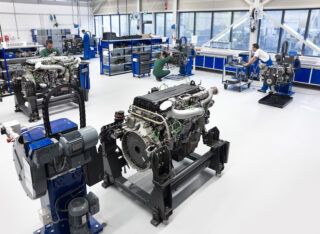
Issue One: with 120 pages of first-class journalism and photography, what more can you wish for? HeavyTorque, Britain’s best loved specialist transport title! Click the appropriate link below to purchase your annual subscription, or individual copy.
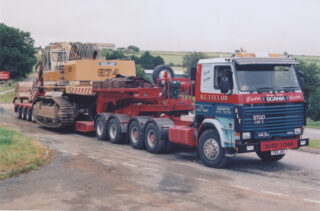
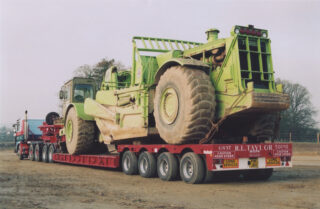
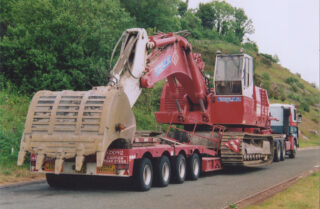
NEARLY FOUR DECADES OF GROWTH SHOW TAYLORS ARE MADE FOR SUCCESS, HEAVYTORQUE REPORTS.
Richard and Julie Taylor’s transport operation may today be one of the biggest in the south east, but life began modestly in 1978 with just a single Leyland Buffalo rigid. Based at Sampford Courtenay near Okehampton, Devon, it was in the early 1980s that heavy haulage work began to run alongside the company’s regular bulk tipper operations. This move led the company to diversify into other business opportunities, with the acquisition of a solitary Scania LB141 4×2 tractor rated for 48-tonne operation pulling a tandem axle Transquip folding neck low loader proving to be a major turning point.
“That was a brilliant motor,” recalls Richard, “and of the reasons our first double-drive tractor was another Scania – namely a 120-tonne LBT141 formerly operated by Scottish Land. With customers asking us to move larger items of plant as time progressed we invested in another new Scania 143E 450 6×4 unit in November 1988.” Good for 150 tonnes it was matched firstly with a tri-axle King low loader fitted with a jeep dolly, and then another Scania R142M 4×2 52 tonner was purchased to handle the smaller loads utilising tri-axle Nooteboom and Andover step-frame trailers.
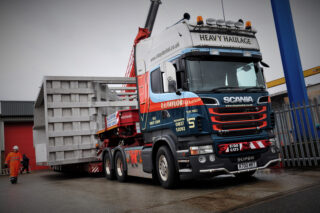
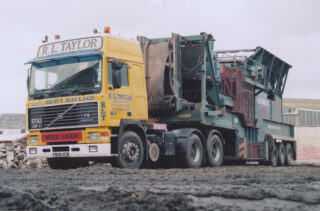
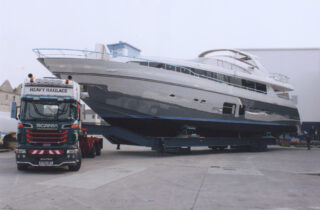
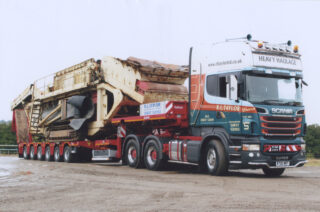
DOES THE ABILITY TO TRANSPORT HEAVIER LOADS ENCOURAGE INDUSTRIES TO PRODUCE BIGGER PRODUCTS? OR IS THE SITUATION IN REVERSE, WHERE LARGER CONSTRUCTIONS DEMAND SUITABLE METHODS OF MOVEMENT TO BE DEVELOPED? HEAVYTORQUE INVESTIGATES
The world of heavy haulage is fraught with hurdles to be overcome, and troubles with the UK’s road network – and the planning and organisation of routes – comes near the top of the list. The problems may not be new, but they certainly continue to challenge hauliers and specialist freight movement companies. If anything, the conundrums are becoming more difficult to solve, as the size of the parts that are being moved are growing, along with the vehicles that move them.
In the past few months, the industry has seen major investments by major operators in equipment from a number of manufacturers, such as Goldhofer and Scheuerle, which illustrates the direction the market is travelling in. However, one look at the history of self-propelled modular transporters (SPMTs) produced by TII Group confirms just how much the systems have evolved – and why they have needed to.
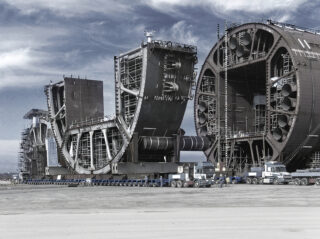
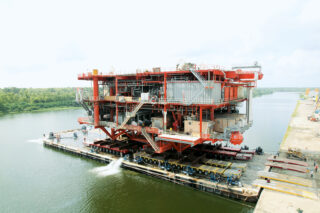
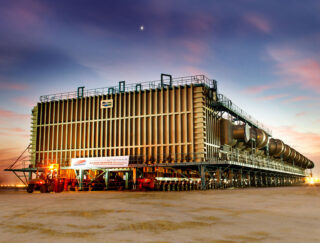
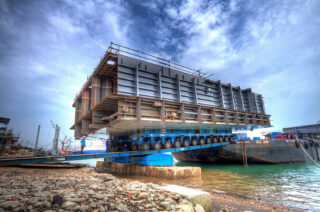
Issue One: with 120 pages of first-class journalism and photography, what more can you wish for? HeavyTorque, Britain’s best loved specialist transport title! Click the appropriate link below to purchase your annual subscription, or individual copy.
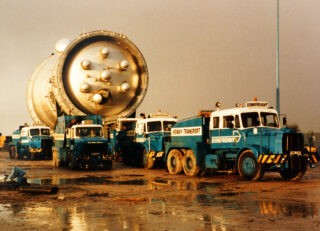
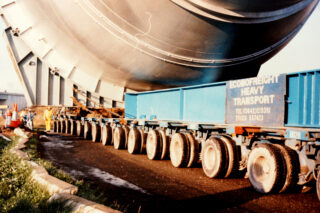
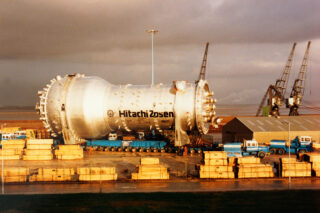
A REGULAR SERIES THAT LOOKS BACK AT HOW LIFE USED TO BE IN THE WORLD OF HEAVY HAULAGE. THIS ISSUE, HEAVYTORQUE CHARTS THE MOVEMENT OF A REGENERATOR IN CHESHIRE, FOLLOWING AN OIL REFINERY UPGRADE IN 1986
The not so silent majority can always be relied upon to have opinions regarding the price of fuel, the need for better roads, and the cost of energy. But once such infrastructure improvements create the need for abnormal/indivisible loads to be moved, those same people will be even more vocal that things “shouldn’t occur on that route”. There are, however, occasions, when a movement is so spectacular that the interest, and wow factor, is great enough to overwhelm even the staunchest NIMBY.
One such event was in December 1986, when a 647-tonne component, forming part of a £400 million upgrade at an oil refinery in Cheshire, was transported 11km along public highways from the nearest quayside to the construction site. The planning for such a logistical challenge had started eighteen months earlier, when Econofreight Heavy Transport was awarded the contract to move the ‘catalytic cracker’ from the docks at Ellesmere Port to the Stanlow Oil Refinery.
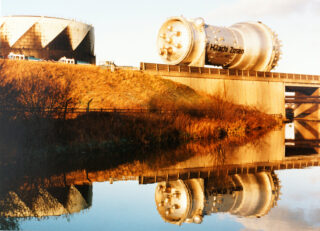
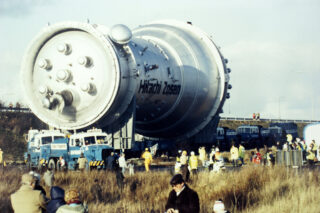
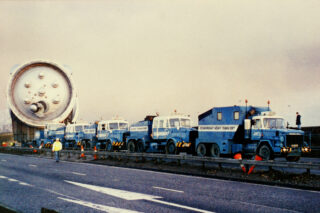
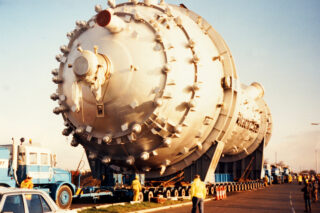
MOVING LARGE LOADS BY ROAD MIGHT PRESENT CHALLENGES, BUT FACTOR IN NAVIGATING SEAS – AS WELL AS LAND – AND THERE CAN BE MANY MORE HURDLES TO OVERCOME. HEAVYTORQUE REPORTS
There is no underestimating the value of international trade. Many companies rely heavily on exports to in order to grow, and hence, have to deal with the transportation of goods to other markets on a regular basis. If said company is a producer of small parts, while it doesn’t make it easier, there are certain advantages over those who are responsible for manufacturing large loads. In turn, these bulky items cause issues on freight forwarders, who have the overall responsibility from getting from A to B. Containers loaded onto cargo ships, but what about when the heavy loads are larger than the dimensions of even the largest container?
Moving products via sea is obviously a much longer process than by air, or even, sometimes, by road – that much is a given – and this point is typically factored in to a scenario of moving heavy loads.
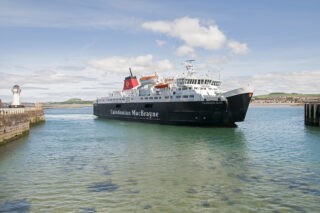

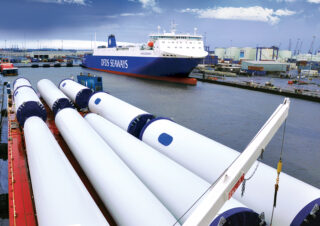
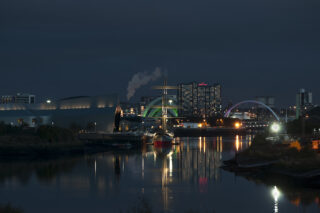
Issue One: with 120 pages of first-class journalism and photography, what more can you wish for? HeavyTorque, Britain’s best loved specialist transport title! Click the appropriate link below to purchase your annual subscription, or individual copy.